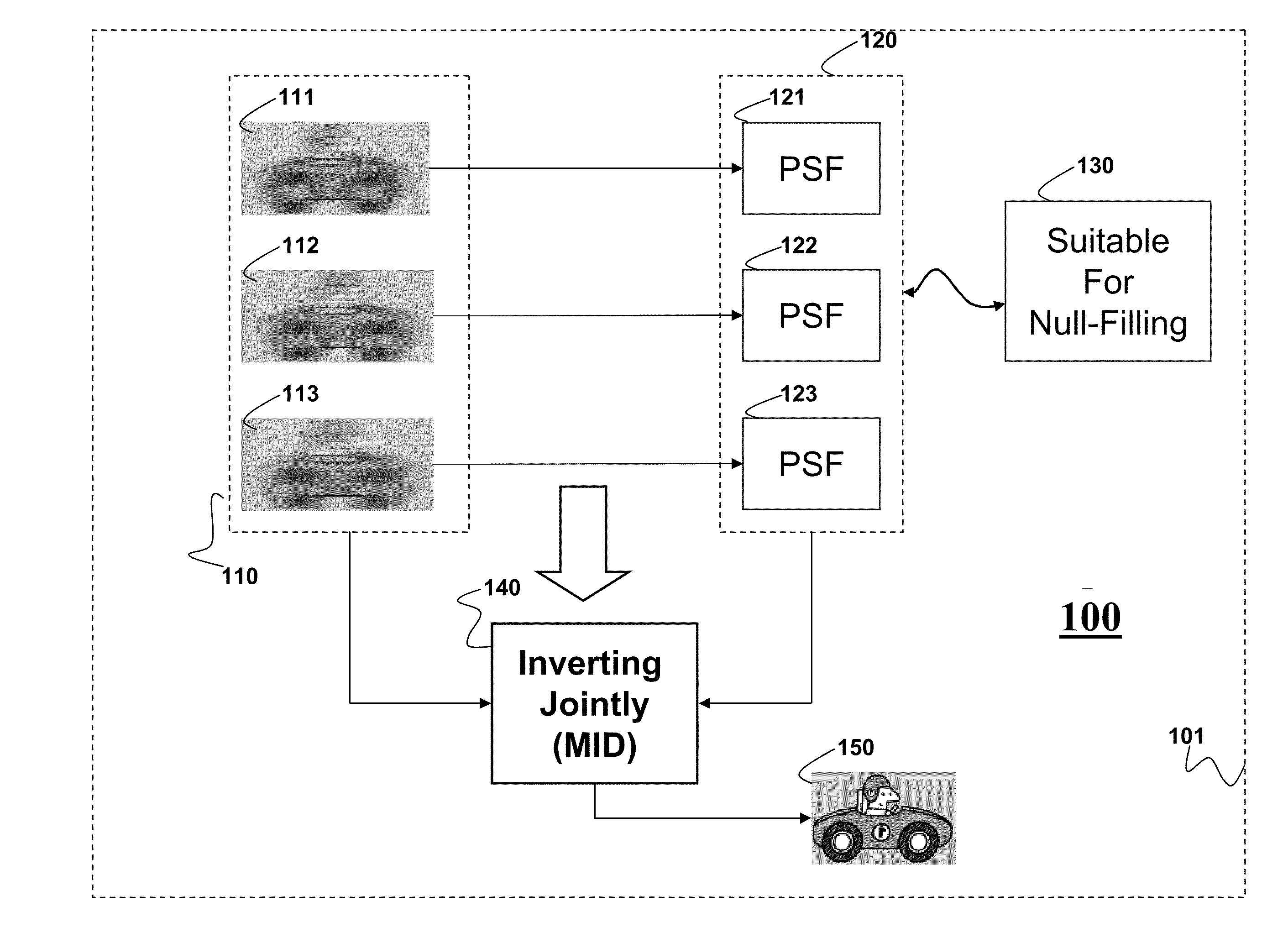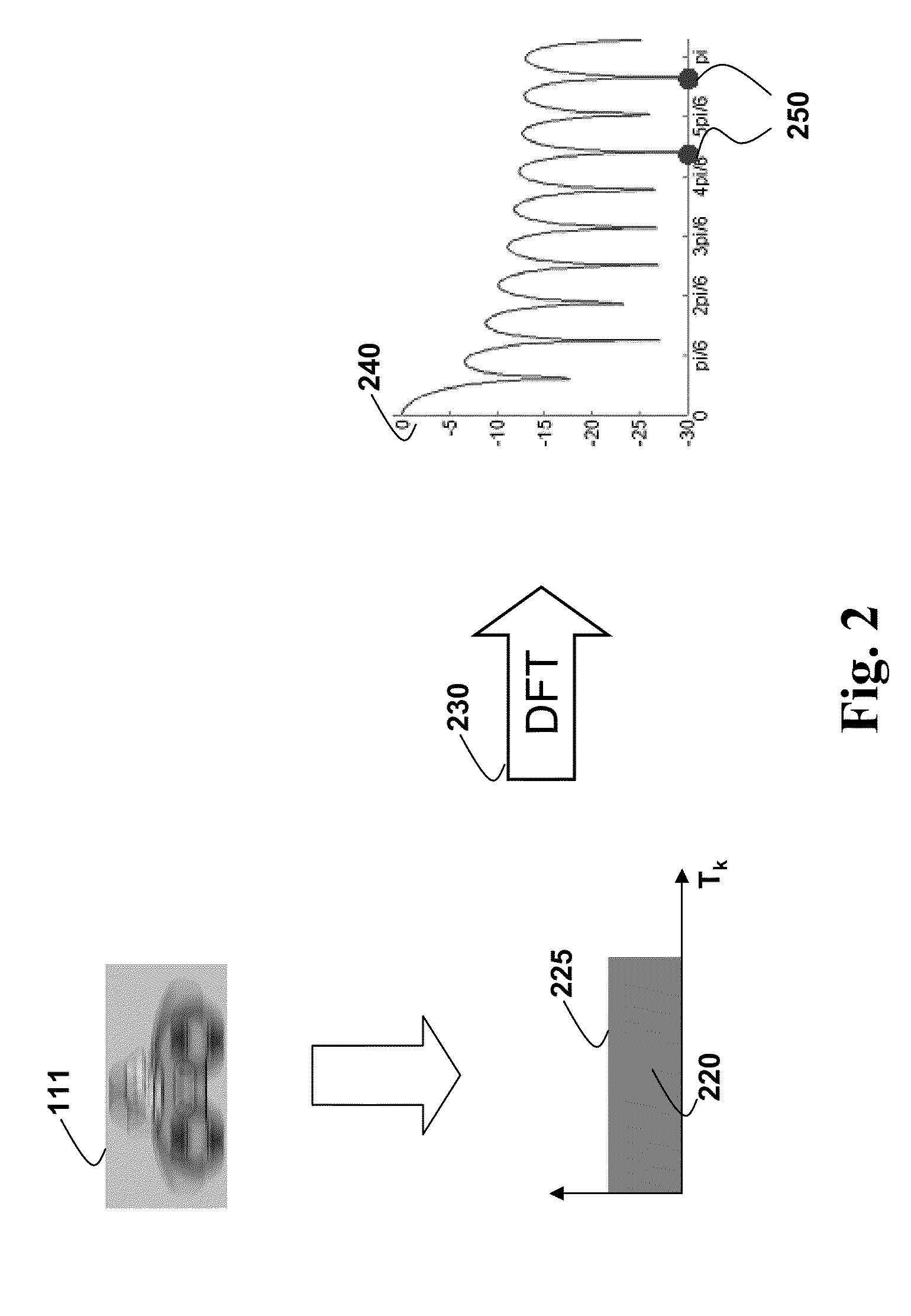Multi-Image Deblurring
a multi-image, deconvolution technology, applied in the field of image processing, can solve problems such as ill-posed deconvolution
- Summary
- Abstract
- Description
- Claims
- Application Information
AI Technical Summary
Benefits of technology
Problems solved by technology
Method used
Image
Examples
Embodiment Construction
[0022]FIG. 1 shows a method 100 for multi-image deblurring of a set of images 110 of a scene according to embodiments of out invention. Each image 111-113 includes an object having a blur associated with a set 120 of point spread function (PSF) 121-123. The method inverts jointly 140 the set of images using the set of PSFs to produce an output image 150 having a reduced blur. The steps of the method are performed by a processor 101.
[0023]The images 110 are acquire by a camera such that the set of PSFs is suitable for a null-filling operation 130. The suitability is achieved by acquiring the images with different exposure times.
[0024]For example, in one embodiment, a first image 111 is acquired with a first exposure time, and a second image 112 is acquired with a second exposure time that is not an integer multiple of the first exposure time. In some embodiments, we use a conventional camera having an auto exposure bracketing (AEB). AEB enables the camera to take a sequence of images...
PUM
 Login to View More
Login to View More Abstract
Description
Claims
Application Information
 Login to View More
Login to View More - R&D
- Intellectual Property
- Life Sciences
- Materials
- Tech Scout
- Unparalleled Data Quality
- Higher Quality Content
- 60% Fewer Hallucinations
Browse by: Latest US Patents, China's latest patents, Technical Efficacy Thesaurus, Application Domain, Technology Topic, Popular Technical Reports.
© 2025 PatSnap. All rights reserved.Legal|Privacy policy|Modern Slavery Act Transparency Statement|Sitemap|About US| Contact US: help@patsnap.com



